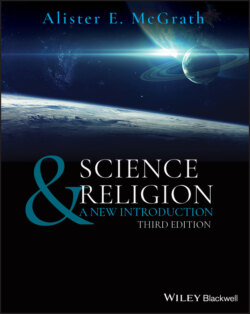Читать книгу Science & Religion - Alister E. McGrath - Страница 12
Dialogue
ОглавлениеA third way of understanding the relation between science and religion is to see them as engaged in a dialogue, leading to enhanced mutual understanding. As the late pope John Paul II commented in 1998: ‘The Church and the scientific community will inevitably interact; their options do not include isolation.’ So what form might their interaction take? How might they complement each other? For John Paul II, the answer was clear: ‘Science can purify religion from error and superstition; religion can purify science from idolatry and false absolutes. Each can draw the other into a wider world, a world in which both can flourish.’
This point was further developed by the ‘Dialogue Group’ of scientists and Catholic bishops in the United States, who declared that: ‘Science and religion can offer complementary insights on complex topics like the emerging bio‐technologies.’ We see here a recognition that the moral limitations placed on the natural sciences by virtue of the amoral character of the scientific method leads to a realization of the need to supplement the scientific discussion from other sources. We shall return to this discussion later in this work (179–85).
This dialogue respects the distinct identity of its participants, while exploring shared presuppositions and assumptions. Ian Barbour regards this model as probably the most satisfactory of the possible range of approaches. It is also found throughout the recent writings of John Polkinghorne, who points out a series of significant parallels between the two magisterial. For example, both science and religion involve at least some degree of personal judgement, in that both deal with data that is ‘theory laden’. Similarly, both involve a series of what might be termed ‘fiduciary’ assumptions – for example, that the universe is rational, coherent, ordered, and whole. A similar concern underlies Alister E. McGrath's Enriching Our Vision of Reality (2016), which aims to enhance the intellectual rigour of Christian theology through an extended dialogue with the natural sciences, especially in relation to issues of methods of investigating and representing reality.
